- Rev. James Marye, Sr. and Jr.
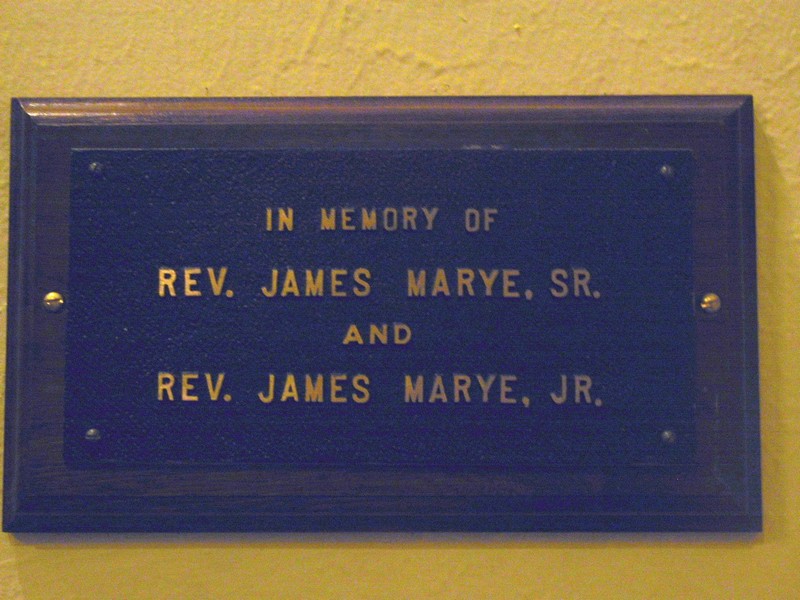
The Kenneth Zuhr family arrived at St. George’s on July 7, 1991 from California. Greeted by Mrs. Frances Hewetson they said they were direct descendants of Rev James Marye and Rev. James Marye, Jr. Their years as rectors at St. Georges spanned 1735 to 1780.
During the time of the last organ renovation in the 1980’s Mrs. Adaline Marye Robertson of Arlington Va. sent a check for $3,000 to the organ fund with the stipulation that part of it was to be used for a plaque to commemorate Marye. It was ordered and placed on a wall beneath the pipes of the gallery organ.
The Zuhr’s were going to visit Mrs. Robertson, a relative. While they liked the plaque they did not like the location. It was subsequently placed on the right side of the Narthex with the other organ plaques. After the recent renovation it was moved to the left wall of the Narthex just before the center swinging doors.
James Marye was a French Catholic priest who subsequently converted to Anglicanism when he moved to England. As was common at the time the priest taught in a school in Fredericksburg. Marye is known as a teacher of George Washington though as our historian Quenzel wrote that it is an ‘unconfirmed tradition’.
Marye was a builder The Church was enlarged with a 32 foot addition making the church “T” shaped. In 1759 a gallery was erected at the west end. The cemetery was also walled in during his years. Several other objects appeared – a sun dial and a bell. The only possession we have left from this period is a 1752 Bible. (A similar Bible was also provided for the Mattaponi Church south of Fredericksburg).
The Church had overlapping functions with the judicial branch and welfare office. In the latter capacity, it sold the parish glebe land and then rented the glebe house plantation of 100 acres for the use of the poor, the first “poor house” in Spotsylvania. In addition, the Vestry exempted handicapped and indigent from paying the parish levy
The son of Marye succeeded his father on his death, the only son so to do on our history. Marye Jr. was educated at William and Mary and later became a tutor for William Byrd’s children. He was ordained an Anglican priest in England. It was during his years that the excess land on Caroline Street was sold as unsuitable for a grave yard (The funds were to buy a more suitable place which turned out to be in the Hurkamp park area. The sale was effected but the funds were lost during the Revolution). Marye remained at St. George’s until his death in 1780, serving the last 3 years during the worst years of the Revolution without pay. He was sympathetic to the cause of the Revolution.
- Dr. Ralph R. Buffington IHO Mary Kent Buffington
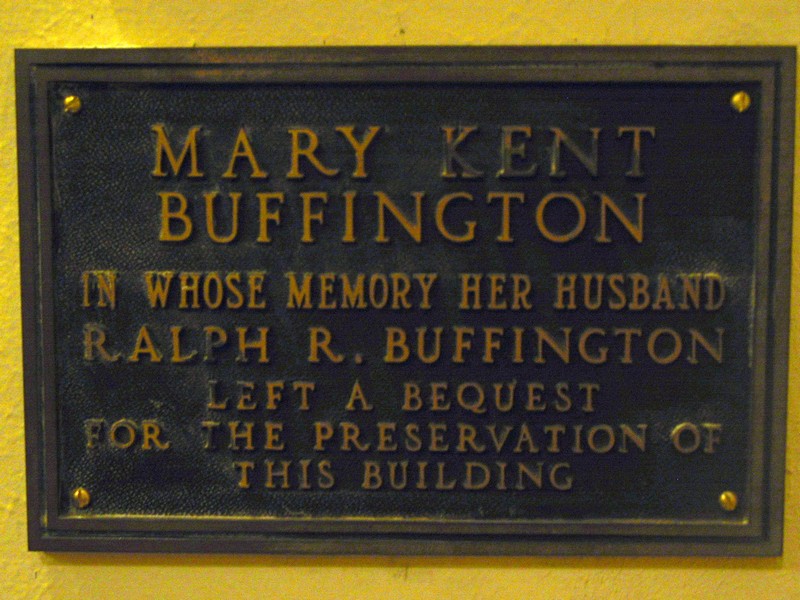
Buffington (1884-1973) owned a jewelry store (Norris Jewelers 623 Caroline) but by 1927 he established an Optometrist practice (619 Caroline). The Vestry was informed on May 21, 1973 that Dr. Buffington’s estate planned to give a $50,000 gift to the Church. On September 17, 1973, Vestry resolved to setup a “Mary Kent Buffington Trust Fund” in honor of Dr. Buffington’s wife to “for repair, upkeep, maintenance and improvement of the Church building and to defray the cost of any addition to the present Church building in Fredericksburg.” Earnings, however, could be used as Trustees saw fit. Today the plaque is located just under the Marye plaque.
- Dr. John J. Lanier – Lanier (1862-1942) was rector 1913-1922. Lanier grew up Baptist, was a teacher

but converted to be an Episcopalian. He moved to seven churches before coming to St. George’s. He is known as the most prolific author to serve St. George’s – ten books on religion, two books on Masonry, two other books on literature as well as the only one who had taught at Virginia Theological Seminary. His son, Dr. Richard Nunn Lanier became a Dentist and presented the hymn boards on either side of the Church in memory of his father. Viewing these plaques from an angle provides an eerie view of the church.
- Ceiling Lights
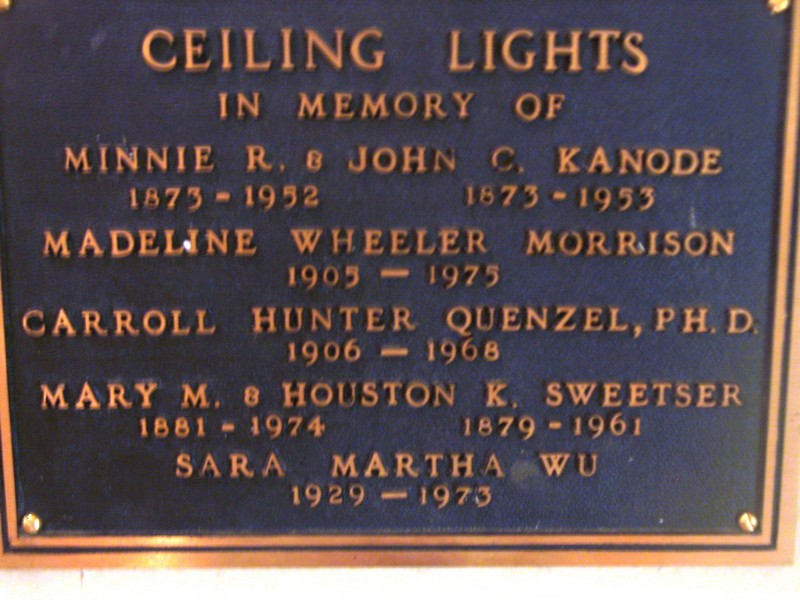
The lights were down lights with three dimmers that are part of the ceiling lights. Initially they were put in the 5 bays to improve the ability to read in the Nave. The Vestry in December, 1975 approved a $1,060 purchase from Beasley and Hudson. $480 was contributed by the Sweetser fund. They were installed before Christmas of that year. The purchase was made just before Tom Faulkner retired in Feb, 1976 after 30 years of service. As he wrote “We have fought the good fight. We have finished our course, We have kept the faith.” This plaque appropriately is just inside the gallery after climbing the north staircase.
Houston Sweetzer, born in Wabash Indiana came to Fredericksburg in 1905 as a sewing machine salesman. With Edgar M. Young, also a member of St George’s, he established a hay, grain and feed business known as Young-Sweetzer. In 1920, they erected a grain elevator that could handle 25,000 bushels of grain a day. Young kept his interest in the business but moved on to concentrate on the lumber business. Sweetzer served 50 years in the choir (1906-1956), was frequently chairman of the music committee and served on the Vestry beginning from 1916. Sweetzer also was president of the Chamber of Commerce, past master of the Masons.
His obituary wrote of him- “He displayed indefatigable energy and business enthusiasm, marked ability and proven ability.”
Carroll Quenzel will be remembered forever as the historian of St. George’s in the 20th Century and was the librarian at Mary Washington College from 1943 until his death in 1968. He considered himself a historian first and librarian second but published in both fields. He oversaw a major expansion of that library, raising its capacity by 100,000 volumes and instituted the open stack system. At St. George’s he served as senior warden twice (1959,1963) and with Mary Faulkner co-edited the newsletter beginning in 1961.
- Podium
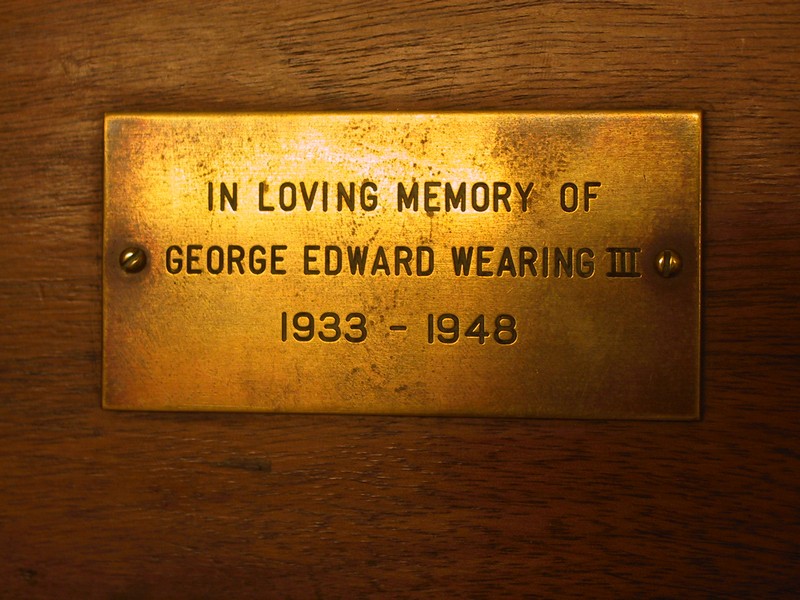
George Edward Wearing (1933-1948). Wearing was the son of Mrs. Hugh Scott and George Wearing. He was on a hunting expedition in Urbanna not far from Christ Church where was in high school. A friend climbed a tree to get a nest of baby squirrels. When his gun slipped, it struck a tree and fired, instantly killing Wearing. Wearing was a member of St. George’s, originally born in Zanesville, Oho
- Alms Bason
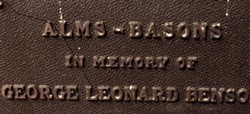
George Leonard Benson (1932-1951). Benson was in his first year of the school of architecture at UVA when he died of a brain tumor five weeks after beginning school. He was a 1950 graduate of JM having won letters in track and a $500 the MacIver Forbes scholarship to attend college. He was a member of Sts. George’s and served as vice-president of the young people’s organization. His father predeceased him, having died of a motorcycle accident in 1936. This plaque is located toward the rear of the chancel on the left.
